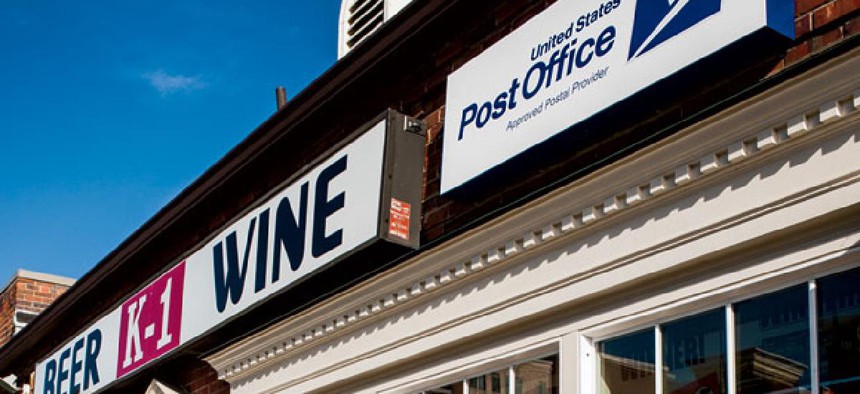
Chris Flynn
It Takes A Village
To reduce costs, USPS is partnering with local businesses to offer retail services.
Lean times call for bold ideas at the U.S. Postal Service.
The agency has faced a tough task over the last few years, fulfilling its obligation to provide universal delivery service while racking up record losses in mail volume and revenue. In practice, this means reaching more than 150 million delivery points—and losing $25 million—daily.
Postal Service officials have been looking for ways to dramatically cut workforce and infrastructure costs without leaving their customers hanging. One business model they are putting their money on is the Village Post Office: a booth or room offering many of the same services as a USPS facility, except in a retail building such as a grocery store.
The Village Post Office program, created in July 2011, aims to provide “convenient access to postal products and services in more rural communities,” says USPS spokeswoman Darleen Reid. The concept offers a compromise for customers who need services and USPS officials who need to reduce costs.
Closing post offices is one cost-cutting measure that typically sparks resistance, especially from lawmakers who represent affected communities. In 2009, USPS announced a plan to shutter more than 3,000 of its 32,000 facilities. By 2012, that target had been reduced to 537. Going forward, the Postal Service has promised to cancel plans to close any more.
To account for this shift, USPS has decided to keep many facilities open, but for briefer periods. Some post offices in rural or underutilized areas are only open for two hours a day, which USPS estimates will save $500 million annually.
But the agency must ensure customers still have access to mailing services in these areas, where the next closest post office is typically many miles away. That’s where the Village Post Office comes in.
VPOs are part of the Approved Postal Provider program, which enlists retail partners such as gas stations that sell stamps. More than 70,000 businesses participate in the program nationwide.
“All feedback has been overwhelmingly positive from both providers and customers,” Reid says. “Who doesn’t like more choices?”
The workers who staff the postal outlets are employed by the host businesses. But USPS personnel provide the on-site training, an arrangement that has prompted no complaints from postal unions, officials say.
The Postal Service has made significant workforce reductions—200,000 jobs through attrition during the past several years and an additional 100,000 scheduled to be cut by 2016.
Officials view VPOs as an ideal solution for everyone involved. Businesses increase foot traffic and revenue, customers have access to services and the Postal Service reduces its overhead. Contracts are negotiated on a case-by-case basis, Reid says, but retail partners typically keep about 10 percent of the mail service revenue and charge a yearly fee for operating a mini-post office.
With just 216 Village Post Offices, the agency is looking to expand the program. That isn’t likely to be hard, Reid says, because businesses typically solicit partnerships with USPS. Once a VPO is up and running, the Postal Service helps promote it with signage, brochures, community mailings and postcards.
The Village Post Office is part of the growth strategy for the Approved Postal Provider program. Almost 40 percent of USPS’ retail revenue comes from what the agency calls “alternative access channels” to mailing services and products.
“We are continually exploring and considering new locations,” says Reid, adding that new VPOs start up almost daily. “There has never been greater access to postal products and services.”
NEXT STORY: Danger Zone Dispatches







